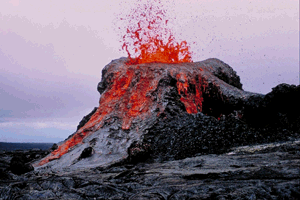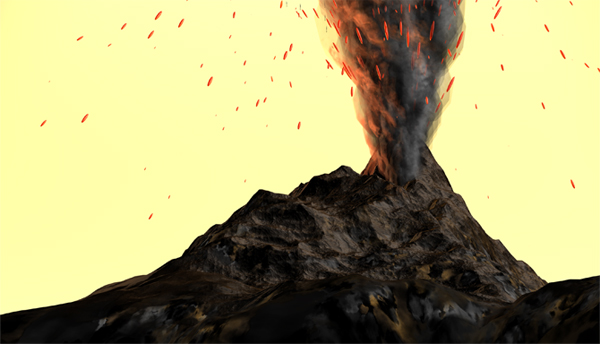Igneous rocks

Igneous rocks are formed by solidification of cooled magma (molten rock) either below (plutonic) or above (volcanic) the surface of the earth.
The magma consists of partial melting of pre-existing rock and can be caused by one or a combination of; an increase in temperature, pressure changes, change in composition.
Volcanoes  are a sign that our planet is immensely hot inside.
are a sign that our planet is immensely hot inside.
An example of an igneous rock is granite. The word igneous comes from the Latin word ignis meaning fire. This is a clue – the rocks were originally very hot! But then they cooled down slowly into a solid rock made up of different bits stuck together called crystals. They are often very beautiful and sparkle in the sunlight.

Igneous rocks are often shown on geological maps  in pink. This map shows an area in New Zealand that has several dormant or extinct volcanoes.
in pink. This map shows an area in New Zealand that has several dormant or extinct volcanoes.
« Back 









